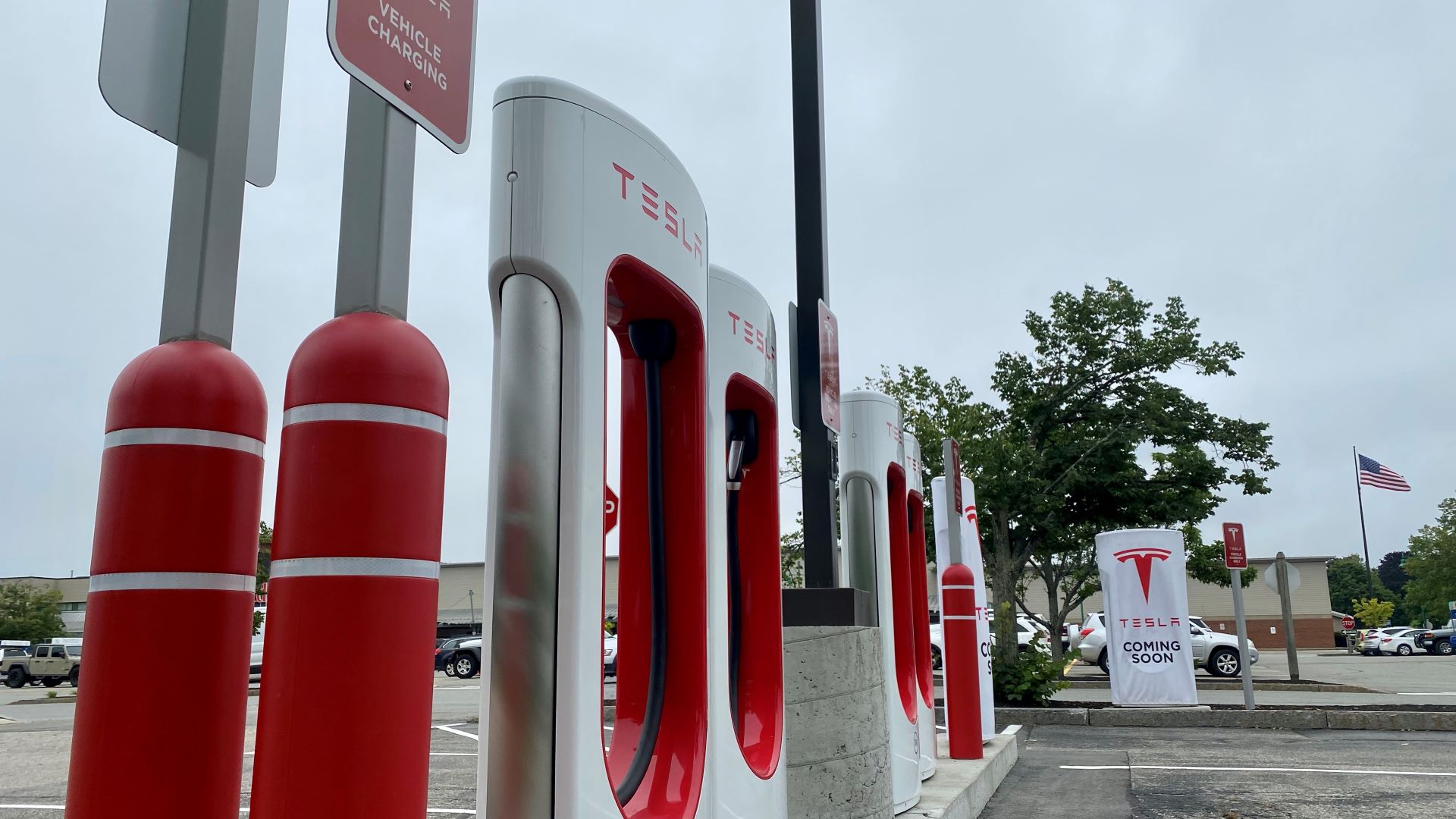A pending youth climate lawsuit in Maine represents the latest iteration of legal strategies aimed at holding states accountable for emissions-cutting targets.
The case is one of a growing number responding to lagging progress on state climate laws that, in many cases, have now been on the books for years. What makes the Maine case unique is its targeted approach — focused on electric vehicle policy as a way to push the state forward on climate action.
The case, filed earlier this year by the nonprofits Conservation Law Foundation (CLF), Sierra Club and Maine Youth Action, argues that the Maine Department and Board of Environmental Protection have fallen short on their legal duty to pass rules that will help achieve Maine’s required emissions reductions.
“There are countless solutions for tackling these various sources of climate-warming pollution,” said CLF senior attorney Emily Green, who is based in Portland, Maine. “But you need something more to make sure that it’s all enough, that it all adds up, and that’s where enforceable standards come in.”
The Maine Attorney General’s office declined to comment, but has moved to dismiss the case. A ruling on next steps is now pending.
Advocates focus on EV rulemaking
The case focuses on a 2019 state law that requires Maine to lower its greenhouse gas emissions 45% from 1990 levels by 2030 and 80% by 2050.
Statutes like this are “where the rubber meets the road,” said Columbia Law School professor Michael Gerrard, faculty director of the Sabin Center for Climate Change Law. “The regulations are the teeth, the specifics on who needs to do what.”
Such rules translate emissions goals into practical requirements for state executive agencies, processing legislative directive “into what polluters are required to do on a day-to-day basis,” said Jennifer Rushlow, an environmental law professor at Vermont Law and Graduate School.
Maine’s climate law said the state “shall adopt rules to ensure compliance” with the emissions targets, requiring those rules to prioritize reductions “by sectors that are the most significant sources.”
Transportation contributes more than half of Maine’s emissions, and Maine’s climate plan prioritized electric vehicle adoption as a result. But the state is a long way off from its EV targets. It has about 12,300 EVs on the road now, with climate plan goals of 41,000 by next year and 219,000 by 2030.
The CLF suit takes regulators to task for repeatedly failing to adopt California’s latest electric car and truck standards, which some states use as a more stringent alternative to federal rules.
Maine has used California’s Advanced Clean Cars I rule for years, but voted earlier this year against adopting Advanced Clean Cars II, which would have required increasing EV sales in the state over the next several years. It’s also chosen twice not to consider adopting the Advanced Clean Trucks rule.
CLF notes that the state’s climate law requires the adoption of rules that are “consistent with the climate action plan,” first released in 2020. A roadmap for meeting the plan’s transportation goals strongly recommended adopting Clean Cars II, calling it “the most important regulatory driver in the electrification of Maine’s light-duty vehicles in the next two decades.”
State says harms are uncertain
In its motion to dismiss the CLF case, the state argues that Maine’s climate law does not require regulators to adopt all climate plan recommendations, or particular ones, as rules.
The state has approved a handful of other rules under the climate law. Two focus on tracking emissions, and two others look at what Green called “narrow slices of the building sector,” the state’s second-largest emissions sector. These rules target hydrofluorocarbons and energy efficiency in appliances.
In their motion, attorneys for the state quote a Maine Supreme Court decision from a separate environmental case earlier this year to argue that it is “simply ‘too uncertain’ … whether future harms will occur that will ‘directly and continuously impact’ any of Plaintiffs’ members.”
CLF’s response lists a range of climate-linked harms that specific members of the plaintiff groups say they’ve already experienced, from increasing tick-borne illness and other health impacts to crop and flood damage.
“Climate change is here. Mainers are feeling the effects from a warming Gulf, from climate-driven storms,” Green said, adding that state lawmakers have repeatedly made similar statements in recent years. “Each day that passes with further inaction is a day wasted.”
The state also argues that the “shifting sands” of state and federal climate policies that could affect Maine’s targets create too much uncertainty around harms from a current lack of transportation rules.
In general, Gerrard said, such factors don’t negate the need for rulemaking. “We are way behind in reducing emissions, and so the fact that other things are happening isn’t going to solve the problem.”
Green said that while Maine has made strides on expanding EV charging infrastructure, for example, “the actual standards are necessary to give that transition the push it needs.”
“Binding rules can basically act as a backstop,” she said. “They can ensure the accountability that the investment and the rebates and the education and outreach, on their own, can’t do.”
Narrower lawsuits get results
The suit’s transportation focus is notable, experts said. “I would say the energy sector is targeted more frequently, and especially the fossil fuel sector,” Gerrard said. Other climate-adjacent transportation cases have focused on vehicle emissions standards, biofuel mandates or highway projects, he said.
Rushlow sees the Maine case as a blend of a 2016 suit, also from CLF, which found that Massachusetts wasn’t fulfilling its 2008 emissions-cutting law, and a suit against the Hawaii Department of Transportation, where a recent settlement will require the decarbonization of Hawaii’s transportation sector by 2045.
Rushlow worked with CLF on the Massachusetts case, but is not involved in the Maine suit and reviewed it after being asked to comment for this story. She said the Maine case lays out why having regulations on transportation emissions is “not just a wish” of the state climate council, but a legal requirement.
“The lawsuits that get really broad can get kind of lost to politics,” said Rushlow. “These lawsuits that are more narrow and focused on the language of particular state laws, I think, can stand a good chance.”
She said there are also more “hooks” to do this at the state level than federally. Gerrard agreed that it’s easier to bring cases under specific statutes than “a constitutional provision or a common law doctrine.”
Both the Hawaii case and the landmark Held v. Montana, which is now on appeal before that state’s Supreme Court, successfully took a state constitutional approach, using their legally given rights to a clean and healthful environment to push for climate progress.
Victories of public opinion
Practical legal results aren’t the only positive impact these cases can have, Rushlow said: “There’s also outcomes in the zeitgeist and public opinion.” Though Juliana v. United States failed in court, she said, it “really drew a lot of attention to the future harm we’re causing our youth — and the current harm.”
But she sees increasing potential for success among a greater share of climate lawsuits just in the past few years, as plaintiffs learn more about how courts are likely to receive different approaches.
“It feels to me like progress is being made,” she said. “But the courts are never the first place you want to go when you’re looking for rapid, systemic change. They’re slow, they’re backward-looking, they’re conservative. And so it’s a challenging forum for the kind of change we need, and yet necessary.”
In Maine, climate groups initially tried a regulatory petition to push for the passage of Clean Cars II.
“When it became entirely evident that that was not going to happen, our hand was sort of forced,” Green said.







